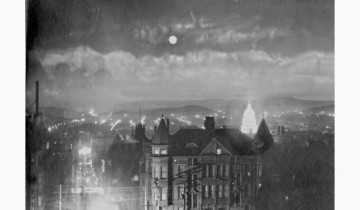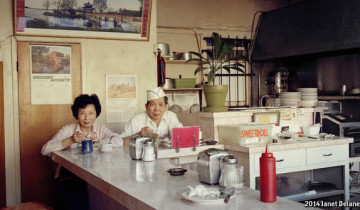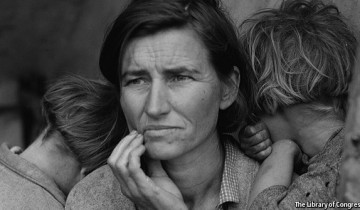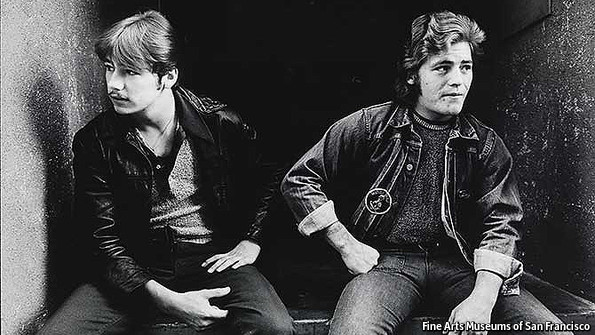“I’m traveling, and I’m interested in chocolate,” is how April Banks introduced herself to folks during a three-month trip to cocoa farms in Africa and Cuba. She had no press credentials, and no agenda. She traveled alone.
Her full story is at POP AND POLITICS and also continues here, after the jump.
A Berkeley-based conceptual artist who strives in her work to create challenging “immersive experiences”, Banks in 2004 was eager to trace the origins of the sweet treat she had consumed much of but only recently had begun thinking about critically. “I started to read more information on packages, like percentages of milk, whether or not the chocolate was bitter, or whether it was a single bean or single plantation bar,” Banks says. “I was curious about what that meant.”
During her trips to Ghana, the Ivory Coast and Cuba, she relied on the good will of cocoa farmers and locals, who were often suspicious, but curious. They wanted to spend time with her and get to know her before they took her onto the farms. She says the experience was extreme. The heat was oppressive. There were usually no maps, no train schedules and no cars.
The poverty was beyond what she had anticipated. She didn’t feel as self-sufficient as she did back home. She had to trust complete strangers. Daily journal entries now posted as an online travelogue kept her sane. Her journal is a reflection of her art, both the fully immersed process by which she makes it and the fully immersed experience it can provide. In a brief excerpt from 12 September 2004, entitled “Last Day in Ghana,” she writes about food and disease and faith and popculture in revealing juxtaposition:
women rarely drive. i saw no women driving taxis, tro-tros or buses.goat meat is a delicacy. bush meat, a wild rodent, is a common menu item.to Ghanaians, Nigeria is a bad word. all things Nigerian are corrupt. except for “Nollywood”, the exploding industry of low budget soap operatic movies from Nigeria that are flooding the West African market. i’ve seen a few. very funny.everyone wears chaleywatahs (flip-flops) even chiefs.typical business name:
Almighty God Tyre Shop
El Shadaii Communication Center
Seek Ye Supermarket
common question:
“Are you Christian or Muslim?”
AIDS awareness billboards and advertisements are everywhere. A common taxi decal reads: “Drive protected. If it’s not on, it’s not in.” there is an illustration of a bus driving into a condom.
music:
high life
hip life
Celine Dion
lot’s of Beyonce and R Kelly
“I could not have anticipated how people there reacted to me,” Banks says. “People not understanding how or why there is an ‘African American.’ So many people did not know slavery had happened. The whole idea of black people in America was, to many of them, a result of some sort of privilege. I went through a lot of emotions. I felt so many things.
Once inside cacao farms near the Ivory Coast one of world’s top three cocoa producers, Banks watched farmers cut seeds from the fruit and dry them. She learned that the product is purely for export, that the farmers don’t eat the chocolate they help produce, and that large numbers of children perform the grueling work of cocoa farming. Although the Ivory Coast produced more than 40 percent of the world’s cocoa supply in 2004-2005, it remains one of the International Monetary Fund’s most heavily indebted poor countries.
The State Department reported in 2000 that about 15,000 children had been sold into forced labor on cocoa, cotton and coffee plantations there in recent years. Banks says conversations with farmers, who typically spoke no English, consisted mostly of hand gestures. She met a few Americans who were able to translate some indigenous languages. Families living on farms were amazingly generous and offered her meals. She later traveled to New York to watch brokers trading cocoa at the Board of Trade. In time, she was able to trace cocoa from farmer to trader to herself: the quintessential chocolate lover.
Banks drew on her personal experience and research to create Free Chocolate, a solo exhibit on display through February 17 at Intersection for the Arts in San Francisco. A publicity photo for the exhibit shows Banks with her index finger silencing her closed mouth, her eyes blindfolded with Hersheys and Cadbury chocolate bar labels. In the gallery a Candid Camera type video recording shows people walking down the street and deciding whether or not to sample free chocolate placed on a table in the middle of a sidewalk.
A sequence of photographs and postcards from Africa and Cuba show images of cocoa farms and farmers, and feature a chain of facts about the cocoa industry. A micro chocolate shop offers products inspired by and based on chocolate.
“I wanted to help explain to people that chocolate comes from somewhere, and we don’t think about it a lot, Banks says. I didn’t try to push a position about fair trade, but to just present information in a visually stimulating way.”
Banks is still exploring her own conflicted feelings about chocolate, her love for it on the one side and the knowing how it is produced on the other, looking for a way to reconcile the two. Her show is one small step. She also participated in a panel discussion on fair trade with members of Global Exchange and TransFair USA. Her next project is to create a series of images that resemble vintage cocoa advertisements but that evidence a political awareness. They’ll contain images and information about what’s happening today on cocoa farms worldwide. “I call it a guilty pleasure, Banks, 34, says. “There’s so much more I could talk about and want to talk about. I could easily do another two or three chocolate shows.”



